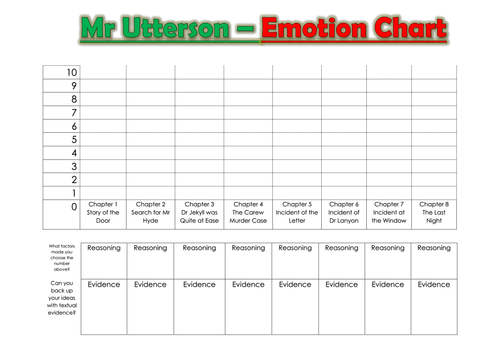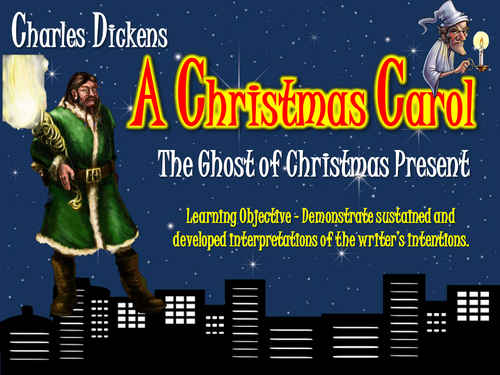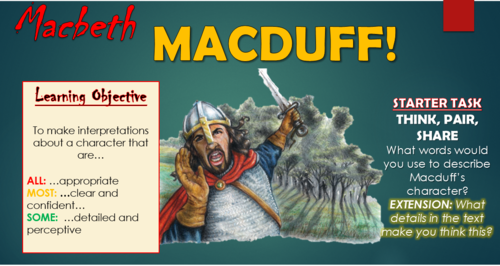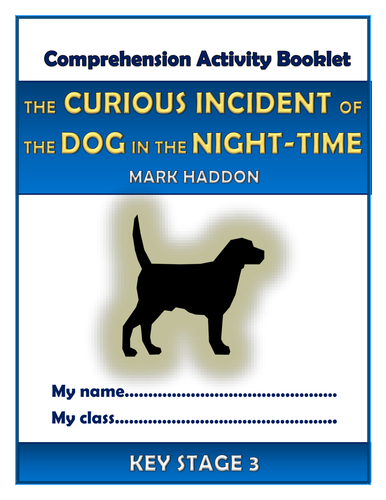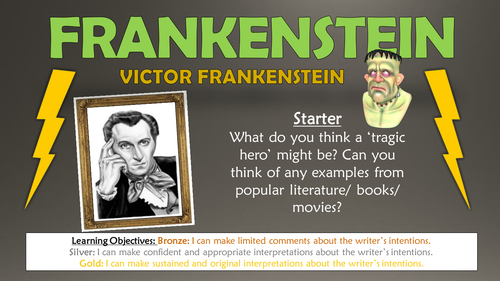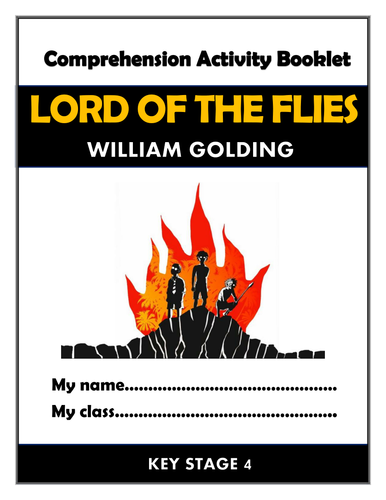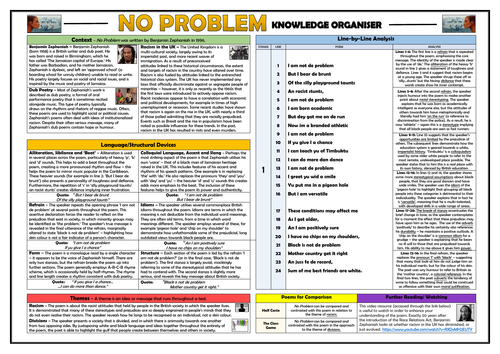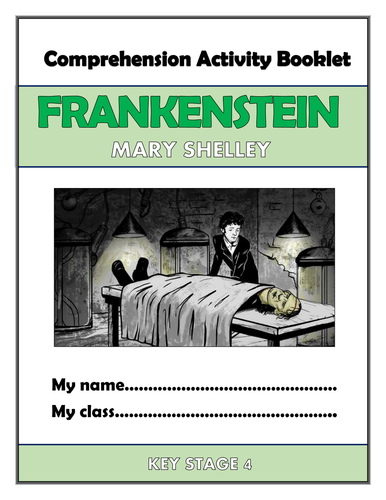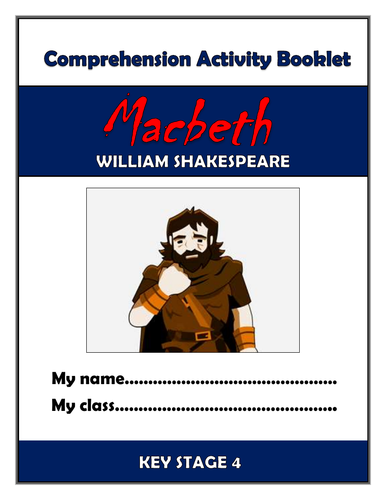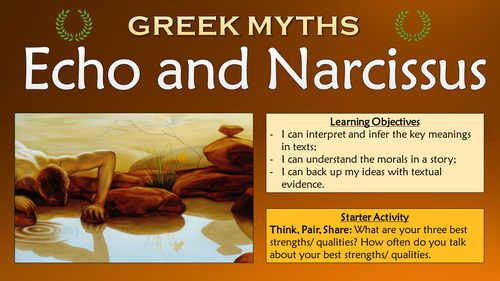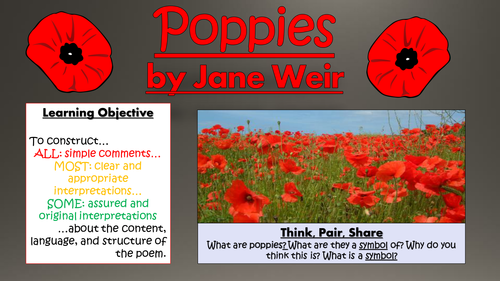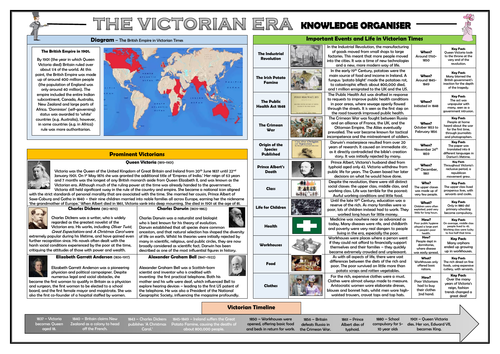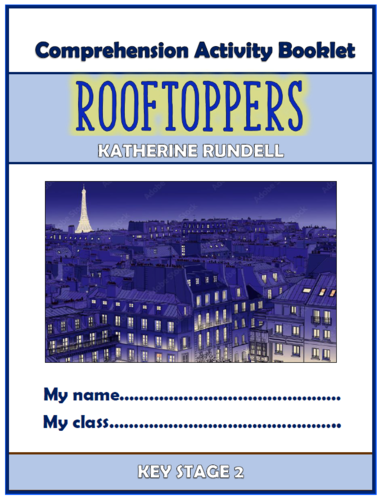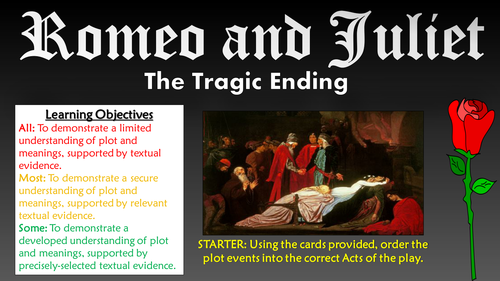
3k+Uploads
1969k+Views
2279k+Downloads
English

Dr Jekyll and Mr Hyde: Mr Utterson!
This engaging and informative lesson enables students to make sustained and insightful interpretations of the way in which the character of Utterson is presented and developed throughout ‘Strange Case of Dr Jekyll and Mr Hyde.’ In particular, students analyse how the Utterson’s calm and rational demeanour is tested through the strange and tragic events in the novella.
The lesson follows a step-by-step learning journey, in which children learn through:
- Establishing how the key characteristics of Mr Utterson;
- Reading and comprehending key extracts describing Mr Utterson in the text;
- Analysing how Utterson's character is developed through events in the text;
- Empathising with Utterson's character and establishing his viewpoints;
- Peer assessing each other's learning attempts.
Included is:
- Whole lesson PowerPoint - colourful and comprehensive;
- Selected extracts from the text describing Utterson;
- Utterson Emotion Graph for the development task;
- Analysis template with success criteria for creating well-structured responses;
- Comprehensive lesson plan.
There are also opportunities for group learning, peer assessment, and whole class discussion. These resources were originally taught to GCSE students, but with subtle adaptations they have also been used with KS3 and A Level Students.
All images are licensed for commercial use, and image rights are listed on the last page of the presentation.

World War II Knowledge Organiser/ Revision Mat!
This detailed and visually-appealing resource offers a complete reference point for students learning or revising knowledge of World War II. It is ideal for GCSE or upper KS3 students, and contains comprehensive sections on:
Major Events - dates, images, descriptions, and key facts;
Key People - Adolf Hitler, Benito Mussolini, Winston Churchill, Franklin Roosevelt, Joseph Stalin, Anne Frank;
Main Participating Countries - Flags, Year joined and death toll;
Timeline of Major Events;
Key words and ideas are underlined for easy reference. The resource is designed to be printed onto A3, and is provided as both a PDF and a Word version (so that you can edit if you want to). All images used are licensed for commercial use and are cited on a separate document (included).

A Christmas Carol: The Ghost of Christmas Present!
This engaging and informative lesson enables students to make insightful and developed interpretations regarding ‘The Ghost of Christmas Present’ in ‘A Christmas Carol.’ In particular, they explore the key messages about generosity and human kindness that Dickens aims to get across through his portrayal of the ghost.
The lesson follows a step-by-step learning journey, in which children learn through:
- Reading and understanding the key plot elements of stave 3 - in which The Ghost of Christmas Present appears;
- Identifying and exemplifying the key features of the ghost, including its appearance, actions, and mannerisms;
- Analysing the extent to which the ghost represents Dickens' message about generosity;
- Peer assessing each other's learning attempts.
Included is:
- Whole lesson PowerPoint - colourful and comprehensive;
- Extract - Stave 3 of A Christmas Carol;
- Features of The Ghost of Christmas Present Worksheet (and completed answer sheet for teachers);
- Analysis template with success criteria for creating well-structured responses;
- Comprehensive lesson plan.
There are also opportunities for group learning, peer assessment, and whole class discussion. This was originally taught to mixed ability year 10 groups, but can easily be differentiated for groups of different ages and abilities.
All images are licensed for commercial use, and image rights are listed on the last page of the presentation.

Neutral Tones - Thomas Hardy - Knowledge Organiser/ Revision Mat!
This detailed and visually-appealing resource offers a complete reference point for students learning or revising Thomas Hardy’s love/relationships poem 'Neutral Tones.’ It contains comprehensive sections on:
Context;
Line-by-Line Analysis;
Poetic Devices/ Language Devices;
Themes;
Form/Structure;
Poems for Comparison;
The Poet’s Influences.
Key words and ideas are underlined for easy reference. The resource is designed to be printed onto A3, and is provided as both a PDF and a Word version (so that you can edit if you want to). All images used are licensed for commercial use and are cited on a separate document (included).

War Photographer - Carole Satyamurti - Knowledge Organiser!
This detailed and visually-appealing resource offers a complete reference point for students learning or revising Carole Satyamurti’s conflict-related poem 'War Photographer.’ It contains comprehensive sections on:
Context;
Line-by-Line Analysis;
Poetic Devices/ Language Devices;
Themes;
Form/Structure;
Poems for Comparison;
Wider Reading
Key words and ideas are underlined for easy reference. The resource is designed to be printed onto A3, and is provided as both a PDF and a Word version (so that you can edit if you want to). All images used are licensed for commercial use and are cited on a separate document (included).

Macbeth: Macduff!
This engaging and interesting lesson aims to improve students’ understanding of one of the key characters in William Shakespeare’s Macbeth: Macduff. In particular, they learn to make insightful interpretations about the character, and are enabled to to infer and deduce Macduff’s key characteristics from his involvement at particular moments in the play, in addition to considering how Shakespeare deploys Macduff as a fitting hero to face Macbeth’s tyranny.
The lesson utilises a range of tasks, that require students to be visual and interactive learners. It follows this learning journey:
Inferring key information about the character of Macduff from events in the text;
Identifying and ordering the key events in the text in which Macduff is involved;
Understanding his role in the downfall of Macbeth;
Understanding his character in relation to historical context, considering Shakespeare’s intentions through the character;
Analysing Shakespeare’s development of Macduff as a key character throughout the text;
Evaluating the learning in the lesson.
Included in this resource pack are:
A well-presented, thorough, and informative, whole-lesson PowerPoint presentation;
Resources for the card sorting sequencing activity, detailing Macduff’s numerous actions throughout the play;
A Macbeth vs Macduff worksheet, to enable students to understand Macduff’s heroic characteristics;
A template to help scaffold the main task, complete with P.E.E instructions;
A comprehensive teacher guidance form/lesson plan to assist delivery.
All images in this resource are licensed for commercial use, and are cited on the final slide of the lesson presentation.

The Curious Incident of the Dog in the Night-time KS3 Comprehension Activities Booklet!
This resource booklet contains a wide range of age-appropriate, engaging, and meaningful comprehension activities for use throughout the reading of Mark Haddon's 'The Curious Incident of the Dog in the Night-time.' Teachers have found them particularly useful in comprehension or guided reading sessions. They are perfect for aiding the progress of children towards meeting the KS3 expectations within the new National Curriculum framework. Children have found these resources extremely engaging, and for teachers there is explicit information within each task regarding which comprehension strands the task is designed to demonstrate. They also relate to key extracts, characters, and themes from the story, ensuring that children gain a deep understanding of the text.
Activities within the booklet include:
- 'Context: Asperger's Syndrome' - to enable students to demonstrate that they can: 'Know the purpose, audience and context of the writing and drawing on this knowledge to support comprehension.'
- 'Haddon's Description - The Police Station' - to enable students to demonstrate that they can: 'Know how language, including figurative language, vocabulary choice, grammar, text structure and organisational features, present meaning.'
- 'Ed Boone' - to enable students to demonstrate that they can: 'Study setting, plot, and characterisation, and the effects of these.'
- 'Vocabulary Inspector' - to enable students to demonstrate that they can: 'Learn new vocabulary, relating it explicitly to known vocabulary and understanding it with the help of context and dictionaries.'
Plus many, many more activities (the booklet is 21 pages in length!) I've also added it as a PDF in case the formatting differs on your computer.
All images are licensed for commercial use, and are cited on a separate document (included).

Frankenstein: Victor Frankenstein - The Tragic Hero
This engaging and detailed lesson aims to improve students’ understanding of the lead protagonist in Mary Shelley’s Frankenstein: Victor Frankenstein. The lesson places a particular focus upon how Victor fits the role of a tragic hero, and it studies the actions and behaviours that lead to his inevitable demise. Students also analyse how Shelley uses the character of Victor to present key messages about religion, unchecked ambition, and the treatment of the ‘others’ in society.
The lesson follows a step-by-step learning journey, in which children learn through:
- Defining the role of the tragic hero and exploring how Victor personifies these features;
- Understanding prevailing attitudes towards religion, ambition, and appearances, and investigating how Victor would have been received considering these ideas;
- Reading and understanding extracts in which Victor's fatal flaws are evident, and considering how they are relevant;
- Analysing how Shelley utilises Victor and his demise to present key messages to readers;
- Linking knowledge of time, place, and author, and relating these to specific areas of the text;
- Peer assessing each other's learning attempts.
Included is:
- Whole lesson PowerPoint - colourful and substantial; (including an animated Frankenstein's monster to guide them through the lesson);
- Mood map - to track Victor's role in the plot and eventual destruction;
- 'Frankenstein's Actions' worksheet;
- Analysis template with success criteria for creating well-structured responses;
- Comprehensive lesson plan.
There are also opportunities for group learning, peer assessment, and whole class discussion. This was originally taught to middle-ability year 10 groups, but can easily be differentiated for groups of different ages and abilities.

Wonder - Auggie's Development!
This engaging and informative lesson enables students to understand how the main character –Auggie – is introduced and developed in R.J. Palacio’s ‘Wonder.’ In particular, students consider Auggie’s character traits in the opening section of the text, and how these alter as the novel progresses. They also consider R.J. Palacio’s intentions in her characterisation of Auggie.
There is easily enough content for at least 2 lessons here, following a step-by-step learning journey. Children learn through:
-Playing an interactive group quiz in order secure a base-level understanding of Auggie;
-Comprehending further details about how Auggie is introduced to the reader, through close re-reading and understanding of identified extracts in Wonder;
-Trackign Auggie’s personal development throughout the novel, whilst also considering J.P Palacio’s intentions in her characterisation;
-Creating their own additional chapter, describing the next stage of Auggie’s life, using information about his character gained over the lesson;
-Peer assessing each other’s learning attempts.
Included is:
Whole lesson PowerPoint - colourful and comprehensive;
Character tracking template;
Writing to describe helpsheet;
Comprehensive lesson plan.
Due to the nature of the lesson, it works best when it is utilised post-reading of the text. All resources are provided in Word (for easy editing) and PDF (to ensure formatting remains fixed between different computers). Word documents are in the zip file. There are also opportunities for group learning, speaking and listening, peer assessment, and whole class discussion. I originally used these resources with a year 6 class, however colleagues have used them for between years 5 and 8 with only minor adaptations.
All images are licensed for commercial use, and image rights are listed on the last page of the presentation.
Sale

Lord of the Flies Comprehension Activities Bundle!
This resource booklet contains a wide range of age-appropriate, engaging, and meaningful comprehension activities for use throughout the reading of William Golding’s ‘Lord of the Flies.’ Teachers have found them particularly useful in exam revision, comprehension tasks, or guided reading sessions. They are perfect for aiding the progress of students towards meeting the KS4 expectations within the new National Curriculum framework - this makes the tasks suitable for all examining bodies. Students have found these resources extremely engaging, and for teachers there is explicit information within each task regarding which comprehension strands the task is designed to demonstrate. They also relate to key extracts, characters, and themes from the story, ensuring that students gain a deep understanding of the text.
Activities within the booklet include:
- ‘Context: The Barbaric Nature of World War II’ - to aid students with ‘Drawing on knowledge of the purpose, audience and context of the writing, including its social, historical and cultural context and the literary tradition to which it belongs, to inform evaluation;’
- ‘Golding’s Description’ - to aid students with ‘Analysing a writer’s choice of vocabulary, form, grammatical and structural features, and evaluating their effectiveness and impact;’
- ‘Jack’ and ‘Simon’ - to aid students with ‘Seeking evidence in the text to support a point of view, including justifying inferences with evidence;’
- ‘Editing the Text’ - to aid students with ‘Making an informed personal response, recognising that other responses to a text are possible and evaluating these.’
Plus many, many more activities (the booklet is around 30 pages in length!) I’ve also added it as a PDF in case the formatting differs on your computer.
All images are licensed for commercial use, and are cited on a separate document (included).

Frankenstein: The Monster's Murders: Justified?
This lesson aims to improve students’ understanding of plot and characterisation in Mary Shelley’s gothic horror novel 'Frankenstein,' through critical engagement with the monster’s justification for murder. The lesson places a particular focus upon the hardship and suffering experienced by the monster, in addition to the discrimination and loneliness that he experiences. The lesson concludes with students completing a highly-informed argumentative piece, detailing whether they feel the monster was justified or not.
The lesson follows a step-by-step learning journey, in which children learn through:
- Recalling and understanding who, when, and why the monster kills individuals throughout the text;
- Reading and understanding key extracts from the text, which include third-person narration from the monster discussing his actions;
- Comprehending the key elements of plot development and character, through interpreting and inferring the key meanings in extracts;
- Listing opposite sides of an argument in regarding the monster's justification, in order to build a stronger case;
- Using the features of writing to argue in order to contend whether the monster was justified in his actions or not;
- Peer assessing each other's learning attempts.
Included is:
- Whole lesson PowerPoint - colourful and substantial; (including an animated Frankenstein's monster to guide them through the lesson);
- Comprehension worksheet (and a teacher answer sheet);
- Extracts from Chapters 16 and 24;
- Card-sorting resources for the introduction task;
- Writing to Argue Help-sheet;
- Analysis template with success criteria for creating well-structured responses;
- Comprehensive lesson plan.
There are also opportunities for group learning, peer assessment, and whole class discussion. This was originally taught to middle-ability year 9/10 groups, but can easily be differentiated for groups of different ages and abilities.
All images are licensed for commercial use, and image rights are listed on the last page of the presentation.

No Problem Knowledge Organiser/ Revision Mat!
This detailed and visually-appealing resource offers a complete reference point for students learning or revising Benjamin Zephaniah’s poem 'No Problem.’ It contains comprehensive sections on:
Context;
Line-by-Line Analysis;
Poetic Devices/ Language Devices;
Themes;
Form/Structure;
Poems for Comparison;
Wider Reading
Key words and ideas are underlined for easy reference. The resource is designed to be printed onto A3, and is provided as both a PDF and a Word version (so that you can edit if you want to). All images used are licensed for commercial use and are cited on a separate document (included).

The Holocaust Knowledge Organiser/ Revision Mat!
This clear, detailed and visually-appealing resource offers a complete reference point for students learning or revising knowledge relating to the The Holocaust. It contains comprehensive sections on:
Holocaust overview;
Stages of the Holocaust;
Key People;
Holocaust Timeline;
Important Holocaust Events;
Life in the Concentration Camps.
The resource is designed to be printed onto A3, and is provided as both a PDF and a Word version (so that you can edit if you want to). All images used are licensed for commercial use and are cited on a separate document (included). It is most suitable for students in upper KS2 and KS3.

Frankenstein Comprehension Activities Booklet!
This resource booklet contains a wide range of age-appropriate, engaging, and meaningful comprehension activities for use throughout the reading of Mary Shelley's 'Frankenstein.' Teachers have found them particularly useful in exam revision, comprehension tasks, or guided reading sessions. They are perfect for aiding the progress of students towards meeting the KS4 expectations within the new National Curriculum framework - this makes the tasks suitable for all examining bodies. Students have found these resources extremely engaging, and for teachers there is explicit information within each task regarding which comprehension strands the task is designed to demonstrate. They also relate to key extracts, characters, and themes from the story, ensuring that students gain a deep understanding of the text.
Activities within the booklet include:
- 'Context: 18th Century Europe' - to aid students with 'Drawing on knowledge of the purpose, audience and context of the writing, including its social, historical and cultural context and the literary tradition to which it belongs, to inform evaluation;'
- 'Shelley's Description' - to aid students with 'Analysing a writer’s choice of vocabulary, form, grammatical and structural features, and evaluating their effectiveness and impact;'
- 'Elizabeth' - to aid students with 'Seeking evidence in the text to support a point of view, including justifying inferences with evidence;'
- 'Editing the Text' - to aid students with 'Making an informed personal response, recognising that other responses to a text are possible and evaluating these.'
Plus many, many more activities (the booklet is around 30 pages in length!) I've also added it as a PDF in case the formatting differs on your computer.
All images are licensed for commercial use, and are cited on a separate document (included).

Macbeth Comprehension Activities Booklet!
This resource booklet contains a wide range of age-appropriate, engaging, and meaningful comprehension activities for use throughout the reading of William Shakespeare’s ‘Macbeth.’ Teachers have found them particularly useful in exam revision, comprehension tasks, or guided reading sessions. They are perfect for aiding the progress of students towards meeting the KS4 expectations within the new National Curriculum framework - this makes the tasks suitable for all examining bodies. Students have found these resources extremely engaging, and for teachers there is explicit information within each task regarding which comprehension strands the task is designed to demonstrate. They also relate to key extracts, characters, and themes from the story, ensuring that students gain a deep understanding of the play.
Activities within the booklet include:
- ‘Context: Shakespearean Britain’ - to aid students with ‘Drawing on knowledge of the purpose, audience and context of the writing, including its social, historical and cultural context and the literary tradition to which it belongs, to inform evaluation;’
- ‘Shakespeare’s Description’ - to aid students with ‘Analysing a writer’s choice of vocabulary, form, grammatical and structural features, and evaluating their effectiveness and impact;’
- ‘Lady Macbeth’ - to aid students with ‘Seeking evidence in the text to support a point of view, including justifying inferences with evidence;’
- ‘Editing the Play’ - to aid students with ‘Making an informed personal response, recognising that other responses to a text are possible and evaluating these.’
Plus many, many more activities (the booklet is around 30 pages in length!) I’ve also added it as a PDF in case the formatting differs on your computer.
All images are licensed for commercial use, and are cited on a separate document (included).

Greek Myths: Echo and Narcissus
This interesting and highly-stimulating lesson enables students to gain a clear understanding of the key meanings in the Greek Myth ‘Echo and Narcissus.’ Through engagement with the story, students learn to interpret and infer the key meanings in the text, understand its predominant morals, and back up their ideas with textual evidence.
The lesson follows a clear, logical, bite-size learning journey, which guides students towards differentiated learning objectives. Over the course of this journey, they become able to:
- Define the key term 'moral' and identify the morals in popular tales;
- Read the story 'Echo and Narcissus' and interpret the key meanings;
- Identify, explain, and analyse the moral of the story in 'Echo and Narcissus';
- Engage deeply with the text by inferring the thoughts and feelings of the key characters;
- Test their understanding of the story by answering an exam-style comprehension question.
-Peer assess each other's learning attempts.
This resource pack includes:
- A visually engaging whole-lesson PowerPoint presentation;
- Paper copies and online links to the text;
- Resources for 'In Your Shoes' Task;
- Bloom's Taxonomy worksheet;
- A logically scaffolded essay template;
- A detailed lesson plan, complete with what the teacher and students should aim to achieve at each stage of the lesson.
All images are licensed for commercial use, and are cited on the final slide of the PowerPoint.

Poppies - Jane Weir
This engaging, comprehensive lesson aims to improve students’ understanding of Jane Weir’s contemporary war poem ‘Poppies’ with particular focus upon the symbolism, language, and structure used within the poem. By the end of the lesson, students demonstrate their knowledge of the text analytically, through assured, appropriate, and sustained interpretations.
The lesson follows a step-by-step learning journey, in which children learn through:
- Defining what symbols are, and considering some popular examples (including poppies);
- Securing contextual understanding of both the use of poppies, and Jane Weir the poet;
- Reading and interpreting the poem, using a provided line-by-line analysis, and interactive group activities;
- Developing their understanding through inferring and analysing key language and structural choices;
- Analysing how the themes of loss and remembrance are conveyed through Weir's use of symbolism;
- Peer assessing each other's learning attempts.
Included is:
- Whole lesson PowerPoint - colourful and substantial; (including hyperlinks to informative and engaging videos)
- Copy of poem;
- Deeper thinking worksheet (and teacher answer sheet);
- Analysis template with success criteria for creating well-structured responses;
- Comprehensive lesson plan.
There are also opportunities for group learning, peer assessment, and whole class discussion. This was originally taught to middle-ability year 9/10 groups, but can easily be differentiated for groups of different ages and abilities.
All images are licensed for commercial use, and image rights are listed on the last page of the presentation.

The Victorian Era Knowledge Organiser/ Revision Mat!
This clear, detailed and visually-appealing resource offers a complete reference point for students learning or revising knowledge relating to the Victorian era. It contains comprehensive sections on:
The British Empire in Victorian Times map (annotated);
Prominent Victorians;
Victorian timeline;
Victorian events;
Victorian daily life.
The resource is designed to be printed onto A3, and is provided as both a PDF and a Word version (so that you can edit if you want to). All images used are licensed for commercial use and are cited on a separate document (included). It is most suitable for children in KS2 and KS3.

Rooftoppers - KS2 Comprehension Activities Booklet!
This resource booklet contains a wide range of age-appropriate, engaging, and meaningful comprehension activities for use throughout the reading of Katherine Rundell’s 'Rooftoppers.’ Teachers have found them particularly useful in comprehension or guided reading sessions. They are perfect for aiding the progress of children towards meeting the KS2 expectations within the National Curriculum framework. Children love learning from these resources, whilst they are also of great use to teachers, as there is explicit information within each task regarding which comprehension strands the task is designed to demonstrate. They also relate to key extracts, characters, and themes from the story, ensuring that children gain a deep understanding of the text.
Activities within the booklet include:
‘Rundell’s Language Techniques’ - to enable students to demonstrate that they can: ‘Explain meanings of words that they know and ask the meaning of new words. Link the meaning of new words to words that they already know;’
‘Character Analysis of Sophie and Matteo’ - to enable students to demonstrate that they can: ‘Understand what is read by drawing on information from more than one paragraph, identifying key details that support the main ideas, and using quotations for illustration;’
‘An Interview with Charles Maxim’ - to enable students to demonstrate that they can: ‘Understand what is read by drawing on information from more than one paragraph, identifying key details that support the main ideas, and using quotations for illustration;’
‘Storyboarders’ - to enable students to demonstrate that they can: ‘Read books that are structured in different ways and for a range of purposes.’
Plus many, many more activities (the booklet is over 20 pages in length!) I’ve also added it as a PDF in case the formatting differs on your computer.
The resource is suitable for home/ remote learning.

Romeo and Juliet: The Tragic Ending!
This detailed and informative lesson enables students to gain a detailed understanding of the features of tragedy evident throughout final act of William Shakespeare’s play Romeo and Juliet. Students learn to demonstrate a developed understanding of key plot meanings and tragedy features such as inevitability, idealism, and vengeance, through analysis of precisely-selected textual evidence.
The lesson utilises a range of tasks, that require students to be attentive and interactive learners. It follows this learning journey:
- Defining the key features of tragedy;
- Remembering and sequencing the key events of the text leading up to Act V
- Reading and interpreting Act V, interpreting and inferring the key meanings;
- Identifying and analysing the key features of tragedy used throughout the scene;
- Considering the effect that these features are intended to evoke;
- Peer/self-evaluating the learning in the lesson.
Included in this resource pack are:
- A well-presented, thorough, and informative, whole-lesson PowerPoint presentation;
- Resources for the reading and interpreting activity - full Act V transcript with space for notes;
- A closer analysis worksheet based upon the features of tragedy (with teacher answer sheet);
- Features of tragedy definition cards;
- A template to help scaffold the main task, complete with P.E.E instructions;
- A challenging and thought-provoking worksheet, and an answer sheet for the teacher.
All images in this resource are licensed for commercial use, and are cited on the final slide of the lesson presentation.

